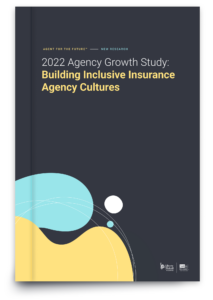More than 90% of executives believed the pandemic would change the way they do business over the next five years, according to a 2020 report from McKinsey, while two-thirds said it would be the most challenging moment of their executive career.
Since then, crisis after crisis has stacked up. Each one seemingly building on another, creating a cascade of uncertainty as each new disruption took hold in our personal and professional lives.
Speculation abounds about how these disruptions will change the way we work and do business. I’ve personally written about the future of work and what the “next normal” will look like. But what’s clearer now than ever before is that the new normal is one of near-constant change.
For agency leaders, this new reality should force a new approach and mindset. One where change is embraced, and resilience is built in at all levels of the organization. One where we give ourselves and our employees the permission to reimagine what life and work, and the intersection of both, can look like. One where leaders can confidently navigate disruption and guide their business through transformation into a brighter future.
While the pandemic may have pulled the future forward, leaders now have an opportunity and a responsibility to do the same.
Here are five lessons in resilience, uncertainty and change that agency leaders should embrace as part of the new leadership playbook:
Create space for reflection and personal development
Every leader, whether they realize it or not, abides by a certain set of leadership philosophies and principles. These are built over the course of a career and are influenced by a unique set of experiences, from how each individual was raised to what values they personally hold and the managers they’ve previously worked under.
Before leaders can effectively build culture and lead teams, they first need a deep understanding of their personal style, what impact that style has on others and how they are perceived by employees compared to how they would like to be perceived.
This requires leaders to embark on an intentional personal development journey—doing the hard work to look inward before looking outward. This type of self-reflection journey is incredibly personal and, ultimately, what works for one leader won’t necessarily translate to another.
When it comes to self-reflection, organizational psychologist and New York Times bestselling author Dr. Tasha Eurich encourages leaders to ask “what” rather than “why.” “Why” questions tend to lead to answers that seem true but are riddled with bias and assumptions. “What” questions, on the other hand, are more solution oriented. For example, asking “Why did I miss sales numbers last month?” will lead to a very different answer than “What do I need to change or do differently to meet sales next month?”
“’What’ questions help us stay objective, future-focused and empowered to act on our new insights,” according to Dr. Eurich. Great leaders know that change starts from the inside. They are willing to take the time and make the space to reflect, ask for candid feedback and learn from mistakes.
Those who have done this work—and continually engage in this work—are better equipped to make sound decisions under pressure, lead more engaged teams and are more confident navigating change.
Unlock individual talent and purpose
Just as every leader has their own style, every employee has their unique, personal talents and purpose. In today’s employee-driven market where 57% of employees are considering quitting for a more supportive job, according to Deloitte, it’s more essential than ever to tailor the employee experience to the individual.

Click here to read our research report about how agencies are hiring younger generations
Leaders should understand the wants and needs of employees at both an organization level and on a one-to-one basis. A mid-career professional with a family, for example, will have very different skills and motivations than a new graduate looking to quickly grow their career.
Building and nurturing authentic, one-on-one relationships allow leaders to get to the heart of what motivates an employee: What are their career aspirations? What brings them joy at work and in life? What does wellbeing look like for them? What type of leadership do they thrive under?
Great leaders ask these questions, and many more, and continue to engage the employee on these topics over time.
They also help employees find purpose and meaning in their work, which has only become more critical in a post-pandemic world. Two-thirds of employees said that COVID-19 caused them to reflect on their purpose in life, according to McKinsey. And with 70% of employees indicating that their sense of purpose is defined by their work, it’s more important than ever for leaders to help employees find and live their purpose at work.
Ultimately, every individual wants and needs different things from their work. It’s up to leaders to identify their personal strengths, help them capitalize on them and create an environment where they can flourish.
Also, employees who are personally invested in the business are more proactive and creative, more likely to bring concerns to management and are more comfortable taking risks, which are all essential to building a resilient team that can thrive through change.
Model inclusive leadership
Valuing an individual can’t be fundamentally separated from valuing their sense of self.
Someone’s sense of self includes a complex mix of external attributes that others can see, such as race and gender, and personal, internal attributes, such as our personality, beliefs, values and lived experiences. Every employee has their own unique identity and inclusive leaders embrace these differences to the betterment of the individual and the organization.
Research from Harvard Business Review shows that teams with inclusive leaders are 17% more likely to report that they are high-performing, 20% more likely to say they make high-quality decisions and 29% more likely to report behaving collaboratively.

Click here to read our report on building inclusive insurance agency cultures.
Inclusive leaders also lead with vulnerability. They challenge the status quo, hold themselves and others to account and empathize with those around them. Modeling inclusive leadership means bringing your authentic self to work and creating a culture where others feel comfortable doing the same. This is an area where leaders and employees don’t always align. A recent Liberty Mutual and Safeco Insurance study found that while 69% of agency leaders say their team can be their authentic selves at work, only 46% of frontline staff agree.
Employees in inclusive cultures feel they can bring their whole, authentic self to work. And when it comes to thriving in an ever-changing world, inclusive cultures deliver better business outcomes. They are six times more likely to be innovative, six times more likely to anticipate change and respond effectively, and twice as likely to meet or exceed financial targets, according to Deloitte research published in 2017.
Create a culture of action
Another feature of inclusive cultures is their ability to move quickly. When leaders break down barriers to having hard conversations, build trust among colleagues and remove the fear of making mistakes, employees are better positioned to make decisions and act on them quickly. In business, speed matters—often more than positive outcomes.
This can be especially challenging in a risk-averse industry like insurance. In a 2019 McKinsey survey of more than 1,200 managers, respondents spent an average of 37% of their time making decisions and believed that more than half of that time was spent ineffectively, which was consistent across both big and small decisions.
But having a bias for action doesn’t necessarily mean taking risks without considering the consequences. Rather, it means evaluating a decision based on the information you have and taking the next best step.
For leaders, embracing a bias for action involves managing the why, not the how. Letting go of the small details in service of the larger ambition. It means being comfortable failing—and failing fast—and continually adjusting and improving as you get more information.
To create a culture of action, leaders need to give employees the tools and resources they need to take action successfully. Specifically, employees need a framework to make decisions.
Clearly defining and articulating the broader business goals is a good place to start. When employees understand the big bets that the company is making, they can more effectively align decisions with those goals. Another part of the decision-making framework is communicating company values. When a set of values is clear and meaningful, it forms the core of an organization’s culture.
At Liberty Mutual and Safeco, one of our core values is to “put people first.” When a problem or challenge arises, employees can act quickly, knowing that they need to meet that standard.
Values that create a framework for decision-making help activate purpose and mission in an employee’s day-to-day work and guide behavior when interacting with colleagues, customers and partners. In a culture of action, leaders are confident in taking decisive action, employees are empowered to do the same and organizations are better able to adapt in the face of change.
Let a better future emerge
For better or worse, leadership and culture are inextricably linked. Leaders are the creators and stewards of culture, establishing values and modeling behavior that influences employees, which is why leaders of even the oldest, most established companies play a powerful role in guiding cultural change.
During times of change, great leaders give themselves—and their employees—permission to drop what no longer works in favor of a better, more productive future. They question whether certain processes and priorities still serve them going forward. And they are courageous in making the hard decisions quickly.
According to McKinsey, future-ready companies share three key characteristics: “They know who they are and what they stand for; they operate with a fixation on speed and simplicity; and they grow by scaling up their ability to learn, innovate and seek good ideas regardless of their origin.”
Future-ready leaders embody these characteristics, build cultures that embrace them and aren’t afraid to usher in change. But after more than two years, one global pandemic and more change than we could possibly have imagined, today’s leaders are expected to do even more with less.
They need to prioritize personal development while prioritizing employee wellbeing. They need to continue growing the business while mitigating headwinds. They need to compete for customers while competing for talent. Leaders of the modern workforce are required to balance countless competing priorities and do so while remaining self-aware, accessible, inclusive, action-oriented and with a future-forward mindset.
It’s time for agency leaders to adopt this new leadership playbook to continue thriving, despite—or perhaps because of—change.
This article was originally published in IA magazine.





Great article!